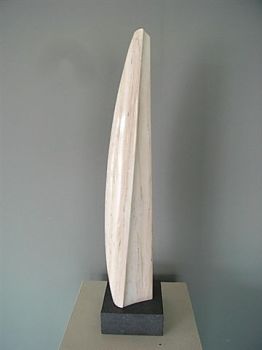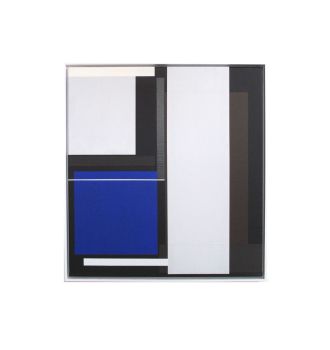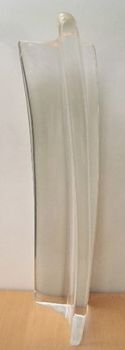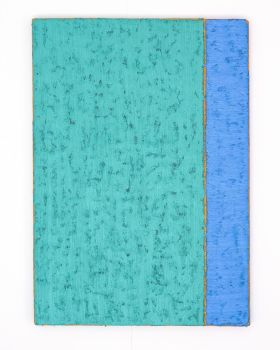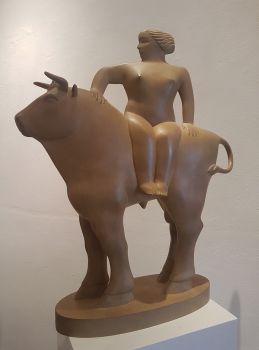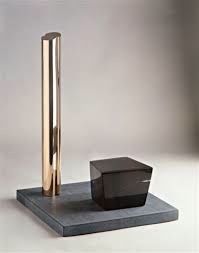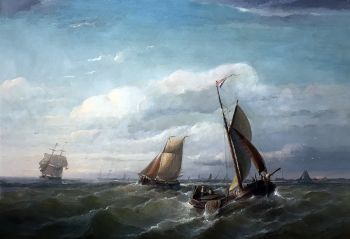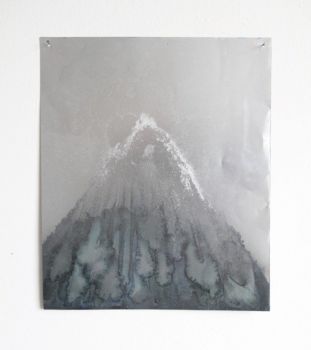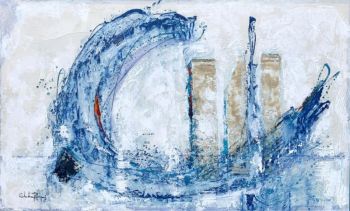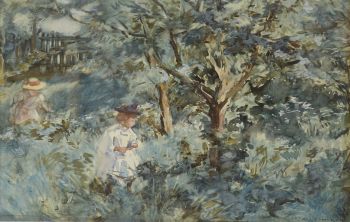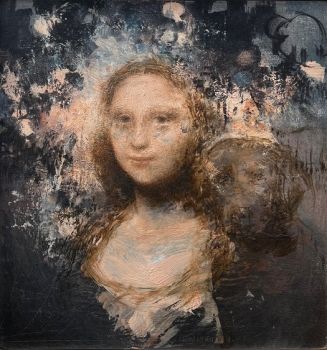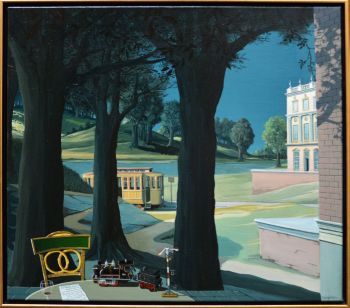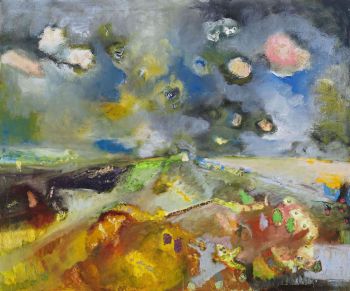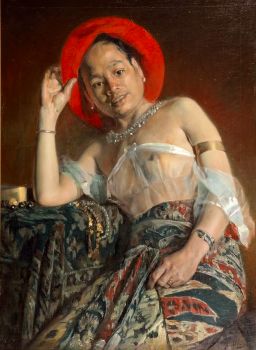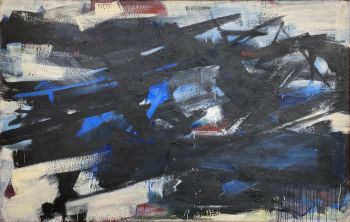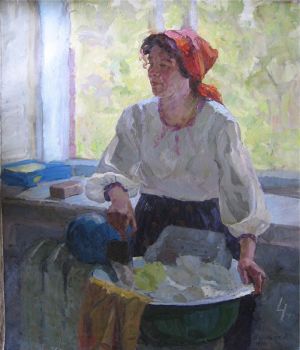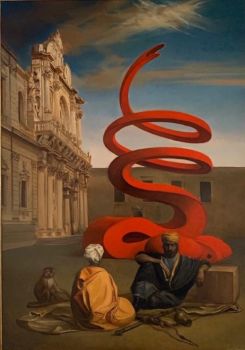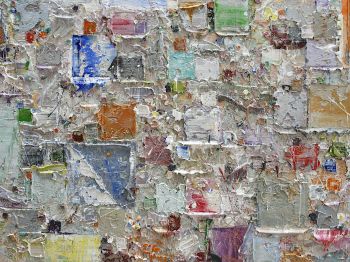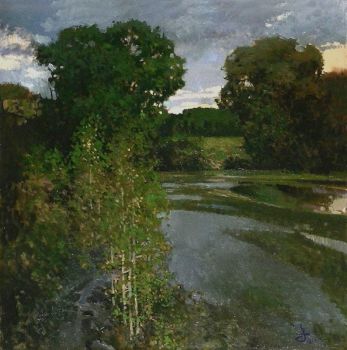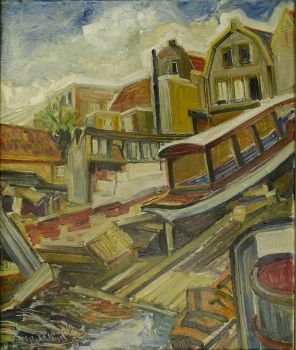Mid-Century Modern Dutch Oil Painting "Composition in White, Black and Blue" 1961
Georg Ruyter
Origineel olieverf op doek
70 ⨯ 60 ⨯ 2 cm
ConditionMint
€ 2.000 - 3.000
The Millen House
- Over kunstwerkThis rare and significant work by George Ruyter captures his journey through various phases of modern art. Ruyter’s career from 1928 to 1960 encompassed figurative work, including drawings, wall paintings, frescoes, and mosaics. In 1941, he joined the Vereeniging Sint Lucas in Amsterdam, and in 1943, he became a member of the Amsterdam Independents. Post-1945, Ruyter began exploring geometric abstraction, and by 1968, his style evolved into Concrete art. In 1974, Museum Fodor in Amsterdam dedicated an exhibition to his work, underscoring his influence in the art world. Reflecting on his process in the *Catalog Fodor 20*, Ruyter wrote: “In general, I work with two opposing elements, which together form a totality that is both static and dynamic. I call it concrete design, something that asserts itself and is based on the properties of the surface and the material to be used. From this also follows the color scheme for each painting.” This approach is evident in his compositions, where structure, material, and color coalesce into unified yet dynamic visual statements.
- Over kunstenaar
Georg Ruyter (1913–1982) was een vooraanstaande Amsterdamse schilder en grafisch kunstenaar wiens carrière een diepe betrokkenheid weerspiegelde bij evoluerende artistieke stijlen, van figuratieve en geometrische abstractie tot de concrete kunstbeweging. Geboren en getogen in Amsterdam, begon Ruyter zijn artistieke reis in 1928 toen hij begon met een opleiding tot tekenleraar. Van 1933 tot 1937 verfijnde hij zijn ambacht aan de Rijksakademie van Beeldende Kunsten in Amsterdam, waar hij een formele opleiding in schilderen kreeg.
Na het voltooien van zijn studie bracht Ruyter vijf vormende jaren door in Haarlem en het Friese stadje Sloten. Deze periode stelde hem in staat om zich onder te dompelen in de serene landschappen en stilte die vaak zijn artistieke thema's beïnvloedden. Hij keerde uiteindelijk terug naar Amsterdam, waar hij de rest van zijn leven doorbracht en zijn plaats binnen de levendige artistieke gemeenschap van de stad verstevigde.
Ruyters artistieke repertoire omvatte landschappen, stillevens en portretten, wat zijn veelzijdigheid en technische vaardigheden liet zien. Zijn vroege werk hield zich aan een figuratieve stijl, waarbij hij af en toe elementen van geometrische abstractie verwerkte. Na 1958 evolueerde zijn stijl echter aanzienlijk, richting concrete kunst, een vorm van abstractie die zich kenmerkt door de focus op pure vorm en kleur, onafhankelijk van externe referenties.
Als actief lid van De Onafhankelijken en de kunstenaarsvereniging St. Lucas was Ruyter nauw betrokken bij de Nederlandse kunstscene en leverde hij een bijdrage aan tentoonstellingen en artistiek discours. Zijn werk onderzocht de wisselwerking van tegengestelde elementen, die hij beschreef als het vormen van een "totaliteit die zowel statisch als dynamisch is." Hij verwees naar zijn aanpak als konkrete vormgeving (concreet ontwerp), waarbij hij de inherente eigenschappen van het oppervlak en de materialen die hij gebruikte, benadrukte.
Ruyters filosofie en artistieke methodologie onderstreepten zijn toewijding aan het creëren van werken die zelfreferentieel waren en puur bestonden als uitdrukkingen van vorm en materiaal. Zijn unieke aanpak positioneerde hem als een sleutelfiguur in de Nederlandse kunst van het midden van de 20e eeuw, waarbij hij traditionele en modernistische tendensen overbrugde.
Tegenwoordig wordt Georg Ruyter herinnerd om zijn intellectuele benadering van kunst en zijn vermogen om contrasterende elementen naadloos te integreren in samenhangende composities. Zijn erfenis leeft voort in de waardering van zijn werken, die het publiek blijven boeien met hun balans van vorm, structuur en emotie.
Bent u geïnteresseerd om dit kunstwerk te kopen?
Artwork details
Related artworks
- 1 - 4 / 24
- 1 - 4 / 24
HUGO VILFRED VON PEDERSEN
Gadesanger fra Singapore (Musician from Singapore)1870 - 1959
Prijs op aanvraagZebregs & Röell - Fine Art - Antiques
Hendrik Willem Mesdag
SCHEVENINGEN, VISSERSSCHEPEN VOOR DE KUST 1903
Prijs op aanvraagGalerie Het Noorderlicht
Egbert Rubertus Derk Schaap
GEZICHT OP KORTENHOEF1862 - 1939
Prijs op aanvraagGalerie Het Noorderlicht
1 - 4 / 24- 1 - 4 / 12


















